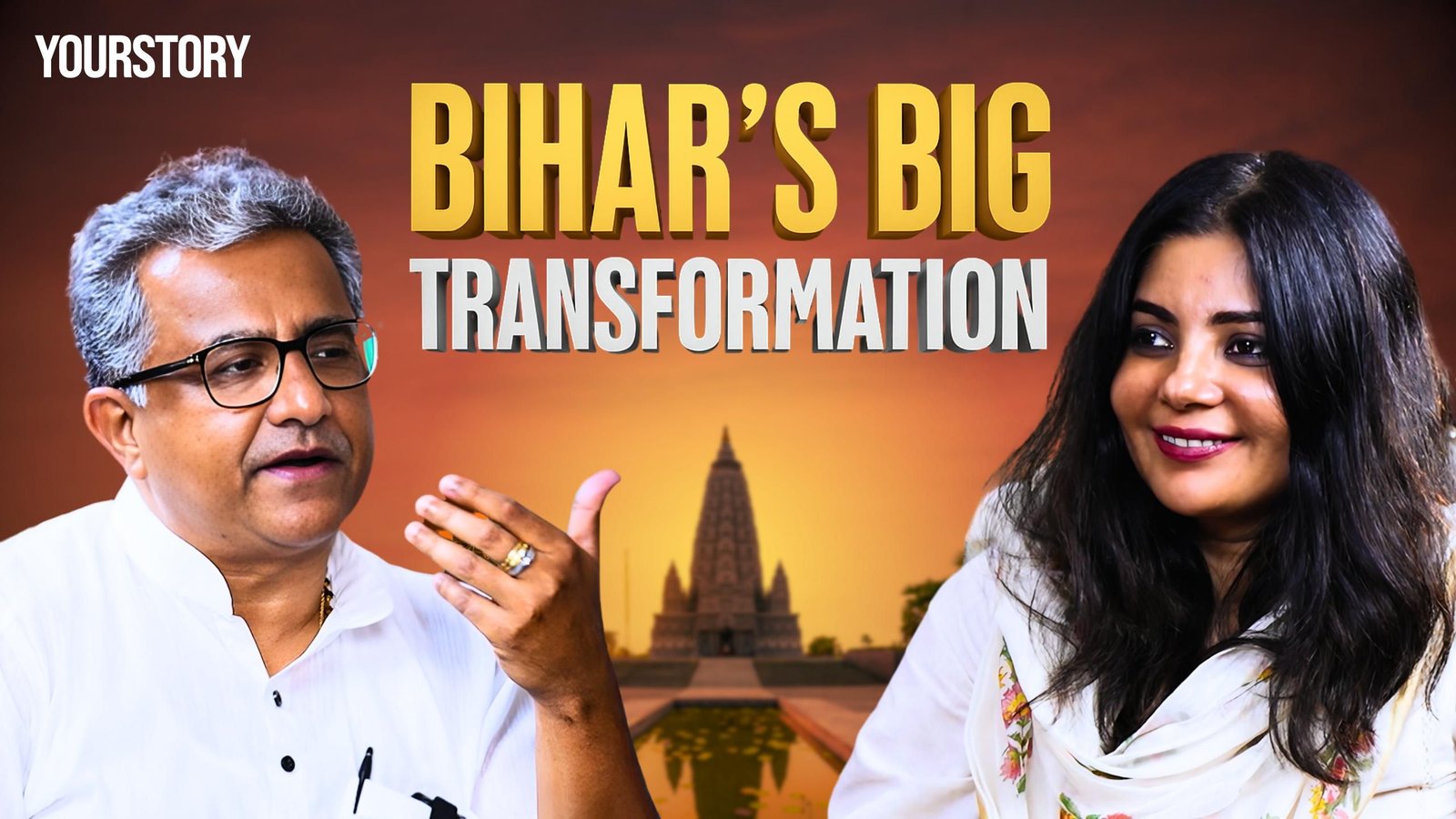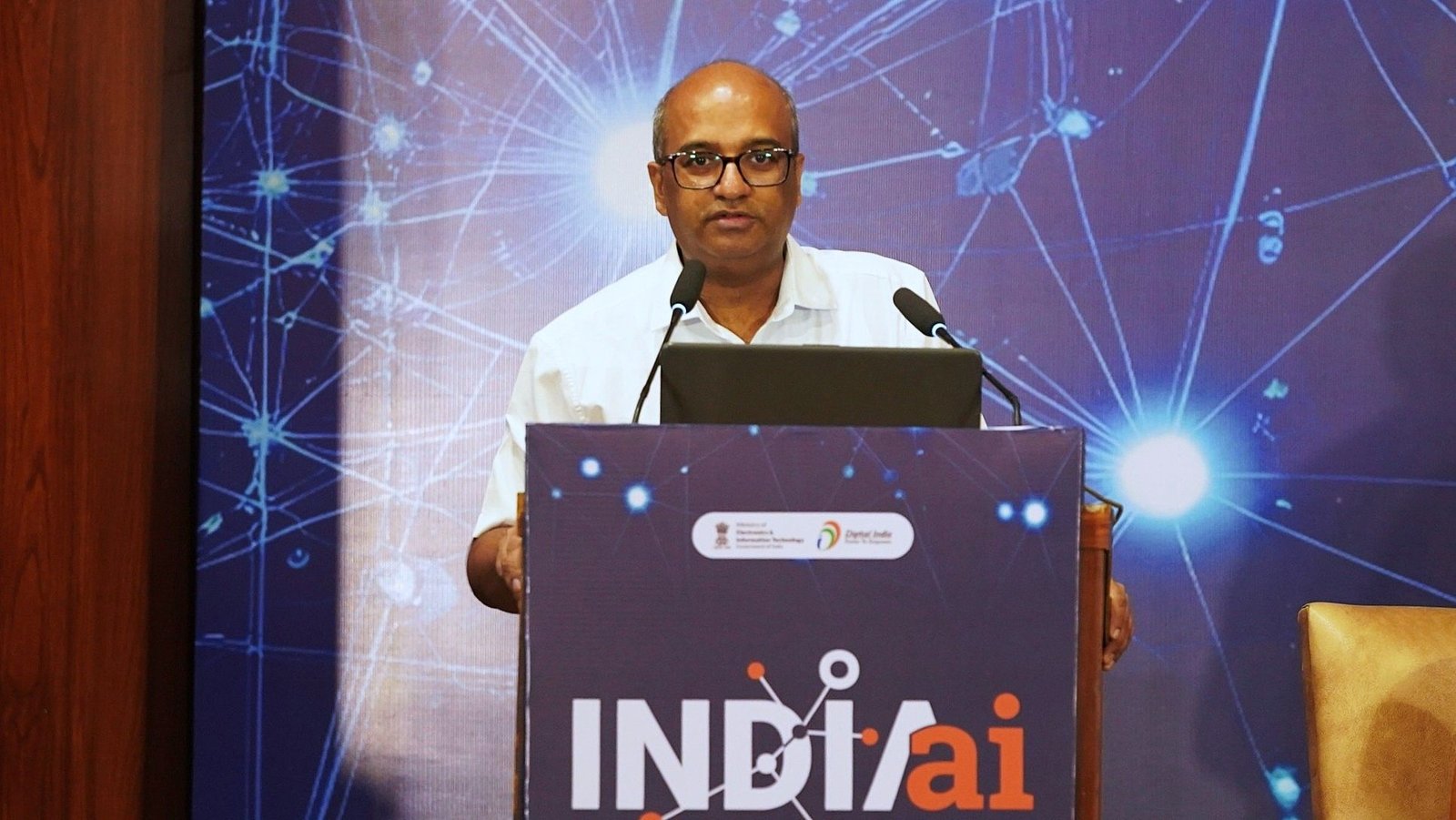Many success stories will come out of Bihar, says Minister Nitish Mishra, eyeing global recognition for startups


“When we talk about startups, hardly anyone talks about Bihar,” says Nitish Mishra, Minister of Department of Industries, Gocernment of Bihar, in a conversation with Shradha Sharma, Founder and CEO of YourStory.
“But I feel that gradually Bihar is getting visible on the startup map. In the last one year, the number of startups in Bihar has increased by 1,000,” the minister adds.
Behind this surge lies a startup policy designed to create space for innovation, platforms to grow, and establish funding pathways to turn bold ideas into real-world impact.
“We are behind at the national level. But I feel that the possibilities and opportunities in the youth here are infinite. They have to be given a platform, which our startup policy provides. And I feel that as interest in startups is increasing, they want to become a job-provider or a job-creator, instead of being a job-seeker, and the startup system is giving them a platform with a different thinking,” the minister remarks.
The launch of the Bihar Idea Festival, a one-and-a-half-month campaign aiming to harvest 10,000 ideas, with at least one viable idea from each of Bihar’s 534 administrative blocks, exemplifies this commitment. From district-level brainstorming sessions to a grand conclave in Patna, the festival is set to open doors for aspiring entrepreneurs across the state.
This emerging ecosystem is supported by accessible educational institutions, as every district houses an engineering college, while each subdivision is equipped with a polytechnic and an ITI, creating a dense network of talent.
The Idea Festival’s portal will serve as a launchpad for the youth, giving them a platform to showcase their ideas in different fields, be it agriculture-based innovations, technology-driven solutions, or out-of-the-box concepts. With mentorship from media partners and industry experts, every idea that meets eligibility criteria will be nurtured under the state’s startup policy.
As the Minister puts it, “I am sure that in the coming years, there will be many success stories coming out of Bihar. And that the startups from Bihar will be discussed at the national and international level.”
He believes that the youth of Bihar, whether from urban or rural areas, have the capacity not only to compete with their peers in the country, but to surpass them, provided they are given a stage and the right opportunities.
Urban vs rural development
While Patna now rivals many metropolitan hubs, urbanisation beyond the capital remains limited across other parts of Bihar.
Historically, Bihar’s urbanisation rate has lagged behind the national average, but recent years have seen a focused effort to upgrade infrastructure across small towns and villages alike. “Our urban bodies have increased. Our cities have increased. The areas that were not urban are now being notified as an urban area by the urban development. The Nagar Panchayat has become Nagar Parishad. The Nagar Parishad has become Nagar Nigam,” explains the minister.
<div class="externalHtml embed" contenteditable="false" data-val="”>
Yet the story isn’t confined to administrative upgrades. On the ground, improved road connectivity, reliable electricity, and enhanced public services are transforming rural life.
“Even in rural areas, the infrastructure has improved so much. Connectivity has improved. There is power supply. There are better services. So, I see a lot of people who are happy to live in their villages post-retirement,” the Industry Minister shares.
The minister’s own constituency, an urban centre, reflects this mosaic of development. From Muzaffarpur to Darbhanga, and from Gaya Ji to Purnia, Bihar’s emerging towns are stirring local economies, encouraging reverse migration, and fostering a sense of possibility far beyond Patna’s limits.
New economic footprint
The minister believes that Bihar holds the most potential in all of eastern India. Bihar’s industrial revival is grounded in repurposing dormant assets and attracting fresh investment.
“An industrial site that was closed in the 90s…I also got the opportunity to go there a few days ago. There, a very large textile unit is coming at an investment of about 400 crores, which will create about 12,500 job employment opportunities in a district like Madhubani,” he says. Equally ambitious is the Forbesganj Industrial Area in Araria, poised to catalyse significant job creation in its hinterland.
Beyond individual projects, the state is laying out comprehensive manufacturing clusters. Gaya Ji, among 12 industrial nodes approved across 10 states, is slated to become a “major township…bringing millions of jobs.”
The minister underscores that Bihar now commands serious investments. “We have signed an MoU of Rs 1,81,000 crore…we have also sanctioned a project worth Rs 90,000 crore.”
The takeaway is clear, the myth that “heavy investments cannot come to Bihar” is being decisively challenged, he says.
Curbing migration, creating opportunities
Migration, once seen as an inevitable consequence of rural poverty, is now being met with concerted efforts to reverse the trend.
“Migration is not just an issue of Bihar. If you look at the whole of Eastern India, migration is in every state,” the minister observes. Yet he draws a crucial distinction: while seeking better opportunities is natural, forced migration out of subsistence needs is “painful.”
Post-COVID realities have nudged industries to situate themselves closer to their workforce, forging a two-way shift: “Now the situation is also such that factories also have to go to the workers.”
Through MSME initiatives and policy incentives, the state is creating local prospects that match or exceed those in distant cities. Minister Mishra highlights the human impact: “If our budget was Rs 23,000 crore, today it is Rs 3,17,000 crore. In 20 years, we have made such a long journey. So, this has also brought an opportunity.”
By fostering an environment where entrepreneurs can launch local enterprises, supported by both private investment and public spending, Bihar aims to make migration a choice, not a compulsion.
Public infrastructure, government spending
Bihar’s economic resurgence is closely tied to its surge in public investment. The state has channelled resources into roads, bridges, power, and institutions designed to uplift every demographic.
“If roads have been built, bridges have been built, if our institutions are coming, then that has also brought an opportunity.” This dramatic increase in budget reflects not only fiscal expansion but a strategic vision of inclusive and scalable development.
At the centre of this vision lies the ambitious goal of creating one crore job opportunities in the next five years, spanning both the government and private sectors. Equally significant is the commitment to equity: “Development for all…development with justice for everyone.”
Whether through initiatives like JEEViKA, aimed at the social and economic empowerment of the rural poor, or through infrastructure built with climate and community in mind, Bihar is crafting a development model that’s both sustainable and participatory.
Bihar’s inclusive ascent
From startup pitches at the Bihar Idea Festival to humming textile looms, Bihar’s transformation is a testament to resilience and ambition.
“…..in 2005, what position was Bihar in? Having a negative growth rate is also a surprising thing in itself. But after that, with better fiscal management, Bihar has set a positive growth rate. We are much ahead of the national average. And in continuity the growth has been in double digits.”
As the Minister of Industries passionately states, Bihar’s development is not accidental, it is the product of clear intent: “Inclusive growth…sustainable growth…where we think about the poorest of the poor, and we think about the youth.”
The state’s identity, once linked to economic flight, is now defined by return, renewal, and rising aspiration.
And this story is being shaped by Biharis like Minister Mishra, a politician for 25 years, who fought his first election in 2000. “I am giving my 100% to the best of my capacity and to the best of my ability.”
For him, Bihar means everything. “Bihar is my soul. Bihar is my identity. And Bihar has given me everything.”
Edited by Megha Reddy
Discover more from News Hub
Subscribe to get the latest posts sent to your email.







